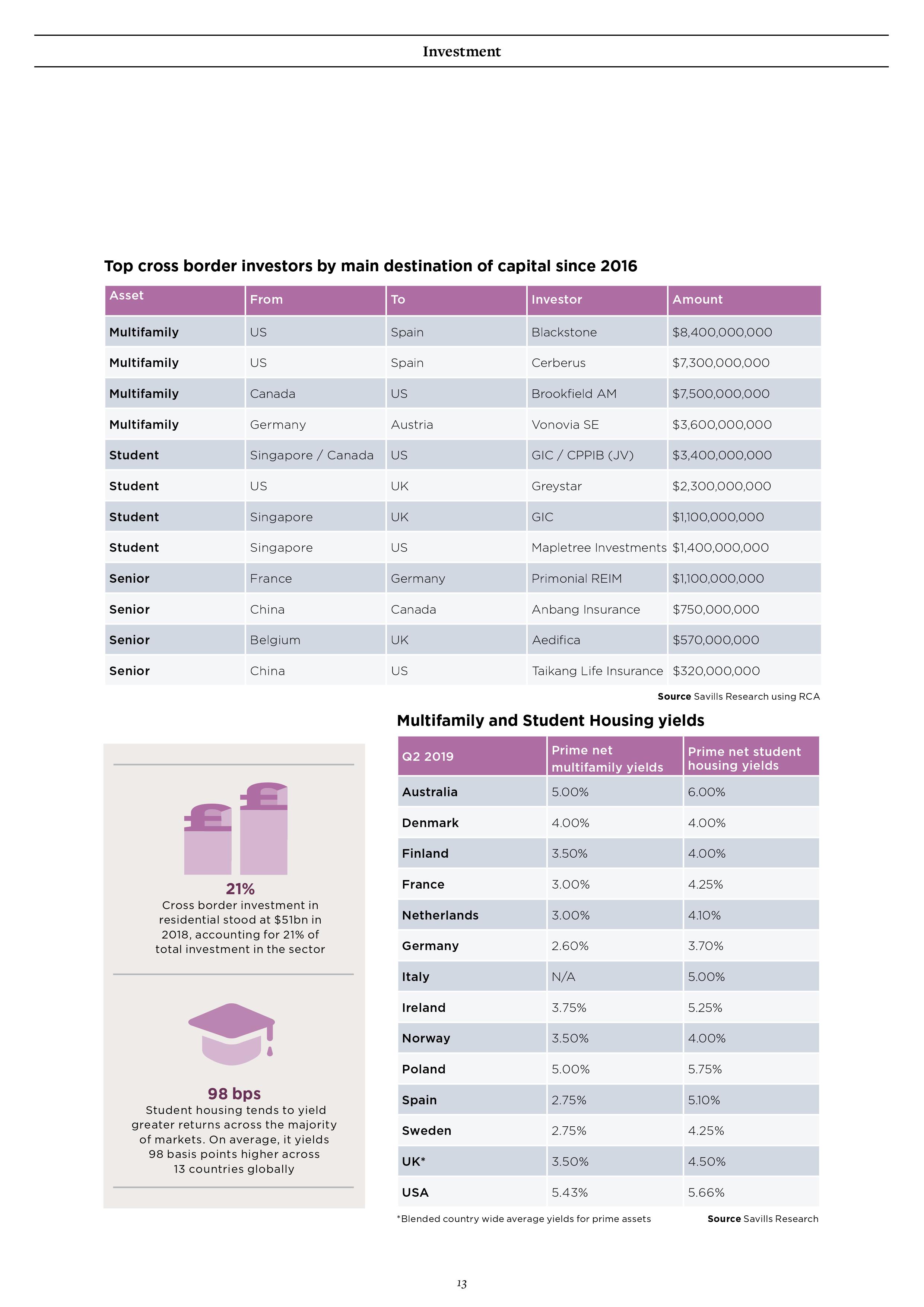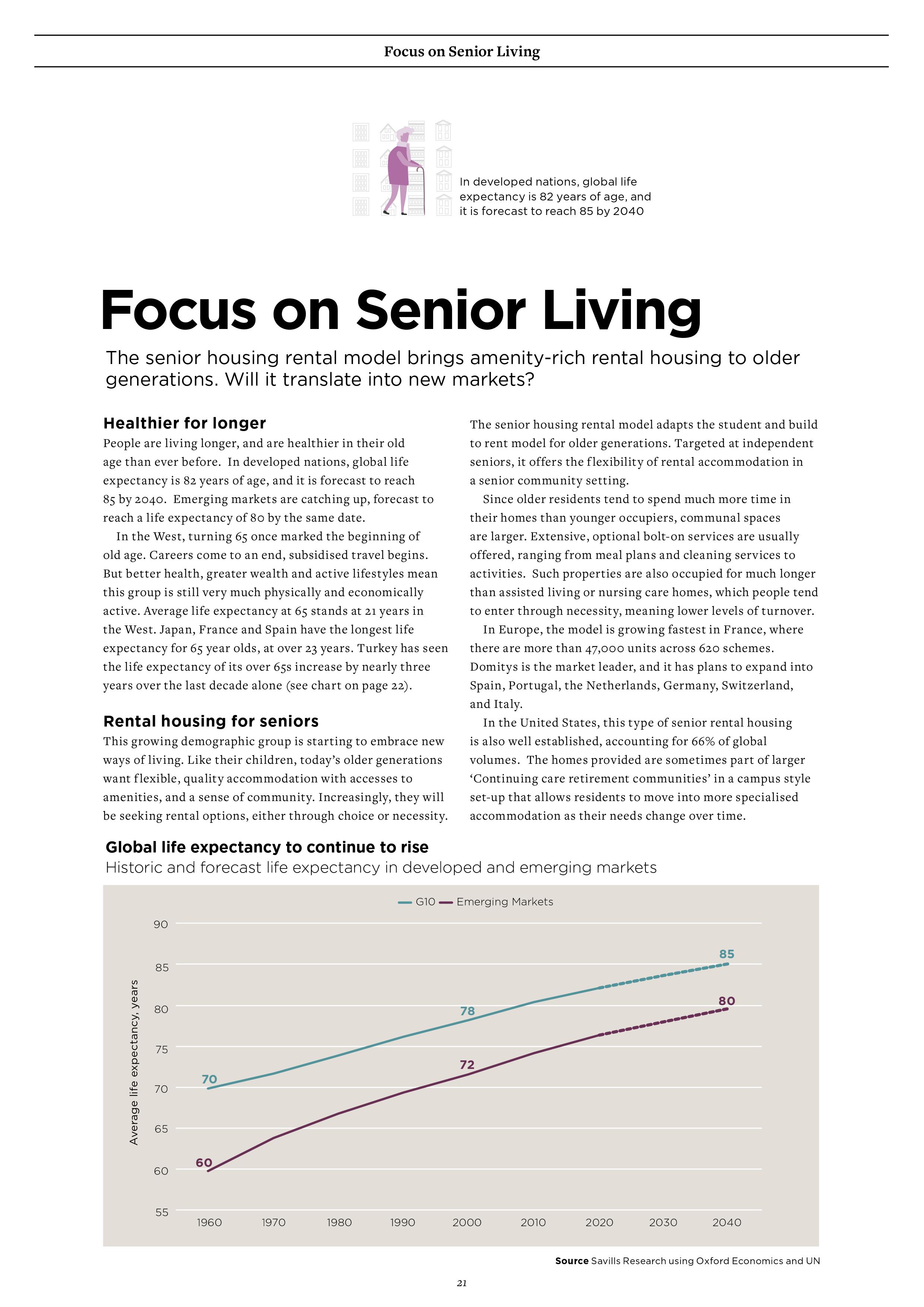
























Savills Global Living 2019
A range of demographic groups are looking for more from their residential accommodation. Investors are capitalising on the opportunity.
People of all ages are embracing flexible living and working. The rise of the gig economy, more sophisticated mobile technology and a drive for collaboration made co-working a global phenomenon. The residential sector is now undergoing a similar transformation. Happy to share office space with relative strangers, more people are now willing to adopt the same approach for living. This comes as a global demographic shift is underway. While populations in much of the developed world are ageing, populations in much of Africa and parts of Asia are forecast to remain youthful. Even in ageing countries, certain cities remain attractive to young, mobile and well-educated professionals. This creates opportunity for providers of flexible forms of accommodation, for both the young and old. Understanding where the hotspots for such age groups are will be key to maximising this opportunity.
Changing attitudes to home ownership are reinforcing these demographic trends.
The Global Financial Crisis (GFC) was a turning point. In Spain, the recession changed homeownership from a symbol of stability and security to one of financial risk.
In the UK and Ireland, first time buyers have been impacted by more stringent mortgage
lending requirements. The aspiration for home ownership hasn’t gone away, but the
better quality purpose-built rental product on offer is making renting a desirable option,
rather than a last resort.
Structural changes in demand, together with new purpose-built supply coming to market, have opened the sector to more investors than ever before. As management platforms develop, investor comfort with operational real estate has increased.
Globally, investment into residential rose in the first part of 2019, at a time when investment into all other major asset classes declined, proving its resilience as global markets slow.




